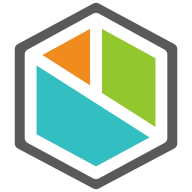

Bizagi and SnapLogic are competing in the realms of process automation and data integration. While Bizagi is noted for its process automation capabilities, SnapLogic appears to have the upper hand in data integration due to its robust handling of large-scale data operations.
Features: Bizagi is known for its process modeling capabilities, adherence to BPMN 2.0 standards, and ease of integration with systems like SAP. Additionally, its simulation tools for process validation are highly beneficial for users. SnapLogic provides a low-code environment with visual data pipeline creation, comprehensive real-time data processing, and numerous out-of-the-box connectors to support various third-party systems.
Room for Improvement: Bizagi could enhance its licensing management, improve diagram alignment, and refine its integration with tools like Visio. SnapLogic needs to provide better data flow transparency and improve error debugging features. Users also suggest enhancing API monitoring and expanding pre-built connectors.
Ease of Deployment and Customer Service: Bizagi supports on-premises and hybrid cloud deployments, though its customer service occasionally shows signs of irritation. SnapLogic offers hybrid and public cloud deployment options with a responsive support team, providing assistance through various SLA levels.
Pricing and ROI: Bizagi offers a free version with competitive paid licensing; however, maintenance costs may impact perceived value. SnapLogic requires a higher initial investment tied to data integration complexity and volume, but it is considered valuable for its robust capabilities and scalable pricing model. Both products report favorable ROI through enhanced process automation and integration efficiencies.
The toolset is very intuitive, so we didn’t need to contact their support much.
We cannot expect major customer support.
The technical support from SnapLogic is excellent, and I would give it a complete ten.
There is no direct scalability option.
If I rate scalability from one to ten, I would probably give it a six.
I rate the scalability of SnapLogic as eight out of ten.
I would rate the stability of SnapLogic as nearly ten out of ten.
For more mature environments, the integration to live systems is lacking, which affects its applicability.
Reporting capabilities can be improved more, and community support should be increased.
If the AI capabilities and integrations were more intuitive and easy to learn for new users, it would be greatly beneficial.
I tend to frequently communicate with SnapLogic to ask for additional features, and they have been responsive.
Bizagi's pricing is very aggressive, and it was one of the reasons we chose it.
There would be only one point of improvement if the price could be lower.
SnapLogic is positioned at around seven or eight out of ten in terms of pricing.
It is open source.
The user interface is very good, making it easy for business people to understand.
Bizagi has rich functionalities; compared to other BPMN tools, it has more features.
I also like the whole child-parent pipeline feature; it allows me to break up a process into smaller pieces and then have one big pipeline that controls these smaller pipelines.
I find SnapLogic to be user-friendly, especially for beginners with limited experience in data engineering or ETL.


Bizagi’s industry-leading low-code process automation platform connects people, applications, robots, and information. As the most business-friendly and flexible solution on the market, Bizagi enables true collaboration between business and IT, delivering faster adoption and success. Fuelled by a community of 1 million users, Bizagi powers over 1,000 organizations worldwide including Adidas, BAE Systems, and Old Mutual. For more information visit www.bizagi.com
The SnapLogic Intelligent Integration Platform uses AI-powered workflows to automate all stages of IT integration projects – design, development, deployment, and maintenance – whether on-premises, in the cloud, or in hybrid environments. The platform’s easy-to-use, self-service interface enables both expert and citizen integrators to manage all application integration, data integration, API management, B2B integration, and data engineering projects on a single, scalable platform. With SnapLogic, organizations can connect all of their enterprise systems quickly and easily to automate business processes, accelerate analytics, and drive transformation.
We monitor all Process Automation reviews to prevent fraudulent reviews and keep review quality high. We do not post reviews by company employees or direct competitors. We validate each review for authenticity via cross-reference with LinkedIn, and personal follow-up with the reviewer when necessary.